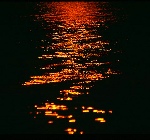Portraits
When photographing people, there are some things to pay attention to:
Subject’s Agreement
First and foremost: if you are not just taking pictures of your loved ones, you cannot presuppose that the person in the picture actually wants to get photographed. Photographing groups of people in public places or unrecognisable figures should usually be ok, but if you clearly show the face of a person, you should ask in advance, although sometimes this is a bit difficult (especially if you do not speak the same language).
If you want to publish or sell the photos, you might even need a formal release form.
The Right Light
Did you ever look into a mirror with the only light being a flashlight shining on your face from below? Great fun for children, but not exactly flattering.
For a nice portrait, soft light usually works best. Either daylight (maybe coming from a window) or light coming from a reflector or one or more flashes with a softbox. A studio setup can be quite elaborate, bringing out the hair with light from behind and a complicated mix of light sources from different angles.
Even when “shooting” outside, you may want to try out using a little fill flash on the face, or reflecting a bit of light using a reflector (they usually come in silver or gold, the latter giving a warmer light).
You can also use the shadow to give a portrait an almost mystical quality, - or simply to hide away scars and blemishes without using makeup.
The Right lens
again, using an extreme wide-angle, you can distort a face and turn the person into a monster with a very prominent nose. Not recommended for normal use.
Actually, an 80-100 mm tele lens (or zoom) usually works best for portraits and already gets rid of some unflattering details
The Right Angle
shooting from down below or from an elevated position may give you a dramatic composition, but normally it is best to hold the camera at the same height as your subject’s head.
This partly depends on your subject: shooting from the front, posing the subject’s nose straight into the lens will make a big nose smaller. Shooting from a slight angle will enlarge a small nose.
The Right Depth of Field
most of the time, you do not want the background to distract from the subject.
Using a tele lens already somewhat reduces depth of field, but you may consciously chose to reduce it even further by selecting a short exposure time and a more open aperture.
Many very good portraits only show the most important part of the face (usually the eyes) in focus.
The Right Film
a film that may be perfect for landscapes may be too saturated for portraits and make the skin tones appear unnatural. This depends on the type of film and on the subject (a sunburnt sailor or people from tropical countries may look fine on Fuji Velvia, but many people from Nordic countries won’t).
Try different films - you may end up using different films for different subjects.
Filters
sometimes filters may help to achieve the right result, by softening the picture or warming the light. I’d still recommend to also take a few unfiltered shots as well.
Nowadays, you can always add an effect in your “digital lab” using standard photo software, but you can’t add back information to an image blurred by a filter at exposure.

